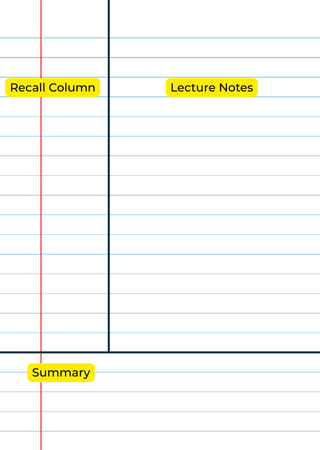Student Resources
Support for
You
Tools to help your rise to success.
The Learning Center team is here to help connect you with resources to aid your learning journey. Here are a variety of options for taking advantage of Learning Center services as well as additional academic skills, research, and writing resources.

Academic Support for Online Classes
With all of the support options available, it can be overwhelming to decide which are the best resources to use in a specific situation. Below are a few suggestions from the Learning Center staff for students taking some or all of their courses online - and these tips also apply for in-person classes, too!

On-Demand Assistance
Brainfuse has tutoring support in a variety of subject areas available - many 24/7. Students can also submit their written work and get feedback within 24 hours. Take advantage of any of the on-demand academic skills resources like Flashbulb flashcards and games or SkillSurfer lessons and test prep.
Meet with a Peer Tutor
Students in online classes have access to any UWGB Peer Tutors who are available to those courses through online/virtual or in-person appointments. Some classes also have Embedded Tutors, who are added to your Canvas course in a Mentor role for even more connection opportunities.
Tips from the Academic Success Coaches
Below are some guides and tips from the Academic Success Coaches based on common issues and frequently asked questions they get from UWGB students.
Time Management
Figuring out how to manage your time and balance all of your responsibilities is a common challenge for college students. Use these tips to get organized and make the most of your time.
Tip 1: Set clear goals
Set goals for each week and if needed set daily goals to stay on task. This will help you procrastinate less and finish your academics not at the last minute.
Tip 2: Plan Your week out
Set time aside each week to plan the upcoming week. This will help you see what all needs to be done and allow you to break the tasks down into daily tasks if needed.
The standard rule is that for a 3-credit course you should be spending at least 1 hour of class time and 2 hours of out of class time for completing homework, studying and reviewing your lecture notes.
Tip 3: Use a calendar or App
Decide if you will use a paper calendar or a digital calendar or both to make your schedule
Tip 4: Time/Task Blocking
Block your time on a calendar and have “fixed times” that remain the same week after week. These are things like class time, study time, homework time, work etc.
Add times for the other things during the week such as extracurriculars, family time, study times if these change week to week, etc.
Tip 5: Priority lists
Instead of creating a whole schedule week to week you could create lists of things that need to be done and then write those on your calendar with a specific time and day you will complete them.
To figure out when things should be done, you can rank them by priority such as urgent/not urgent and important/not important.
Tip 5: Avoid multi-tasking
Focus on one task at a time to get more done. Research shows that even though we think we are good at multi-tasking and get so much done, we in fact don’t! Focus on a task for at least 30 minutes if not longer and then completely switch tasks, don’t jump between tasks.
Tip 6: Manage Timewasters
Set expectations/goals for yourself when focusing on your academics and manage the things that may get in the way such as your phone, email, friends/family, gaming, extracurricular activities, etc.
Set limits on your phone, discuss your goals with family and friends and ask them to help hold you accountable, make sure to look at how much time you are spending with gaming and/or extracurricular activities and how you can cut back to have more time for academics.
Tip 7: Take breaks
Plan short breaks in your schedule to give yourself a break and to help prevent burnout. You can try the Pomodoro Method of working for 25 minutes and then taking a 5-minute break, and after doing this 4 times you take a 15-minute break.
Tip 8: Review and adjust
Regularly look at how you are doing with your time management strategies, what’s working and what’s not? Some weeks certain things will work and other weeks you may struggle and need new strategies, which is okay and will help you take control of your time and improve your time management.
Cornell Note Taking System
Originally developed at Cornell University, this note-taking method works for almost any class or lecture. It is designed to save time, make studying easier, and help you remember what you learn.
- If you have one, use a large, loose-leaf notebook - more space for diagrams, examples, and notes. Loose-leaf makes it easy to add handouts or rearrange pages.
- Write on one side of the page only so you can lay notes out side-by-side later.
- Draw a vertical line about 2 1/2 inches from the left margin.
- Right side = lecture notes
- Left side (the "recall column) = keywords or questions you'll add later
- Before each new lecture, skim the notes from the last class so you can connect ideas.

- Take notes in simple paragraphs. No need for fancy outlines.
- Focus on main ideas over tiny details. (You can get dates and names from the textbook.)
- Leave a blank line when one idea ends and another begins.
- Use numbers/letters for sub-points if needed.
- Abbreviate when possible — but only if you’ll understand them later.
- Write neatly so you won’t waste time deciphering your handwriting later.
- Review ASAP. Ideally the same day, before you forget details.
- Make messy parts legible, fill in any blanks, and highlight or box the main ideas.
- In the recall column (left side), jot down keywords, questions, or short phrases that summarize the ideas on the right.
- Test yourself:
- Cover the right side of your notes.
- Use the keywords on the left to recall and explain the content in your own words.
- Uncover the notes and verify what you have said.
Test Taking Tips
Different types of tests and quizzes need different approaches for successful results. Use the strategies and tips below to succeed on your next test or exam!
Tests are common across many subject areas. These can include quizzes, presentations, hands-on demonstrations, and formal exams. In general, the following actions can help you when navigating any kind of exam.
- Carefully read directions. The directions on exams can vary. Read through the directions of each section making note of important details.
- Budget your time. Take time to learn the structure of the exam and plan accordingly. For example, the test could have multiple parts or sections. You could prioritize questions with high point values or tackle sections you recognize immediately.
- Don’t rush but also don’t dawdle. You want to take enough time to read questions carefully and answer them completely. But you don’t want to waste all the exam time on a fraction of the questions. Finding that balance can be difficult but make sure you are giving yourself time to work on every problem.
- Try not to panic. Many students we work with talk about how test anxiety affects their performance on a test. Use good test taking strategies and relaxation techniques during your exam to combat test anxiety when you start to feel it.
Multiple choice questions present you with several options, to answer what’s called the stem. We need to be extremely confident in our ability to recall definitions to answer multiple choice questions. Some of the alternative answers provided could be what we call ‘distractors’ – a misleading answer that appeals to students who don’t have a strong grasp on the definitions. Try to follow these steps: Identify Terms, Recall Definitions/Concepts, Eliminate, Choose the Best Fit.
Example: Which of the following best describes the role of the rough endoplasmic reticulum (RER) in a eukaryotic cell?
- Synthesizes lipids and detoxifies drugs
- Produces ATP through cellular respiration
- Synthesizes proteins for secretion or membrane insertion
- Packages proteins into vesicles for transport
Applying these strategies
- Identify Key Terms
Focus on the term rough endoplasmic reticulum. The word rough refers to the presence of ribosomes on its surface. - Recall
Ribosomes are responsible for protein synthesis. So, the RER is involved in making proteins. - Eliminate Incorrect Choices
- A refers to the smooth ER, not the rough ER. (A possible distractor!)
- B is the function of mitochondria.
- D is more aligned with the Golgi apparatus.
- Choose the Best Fit
- C matches the known function of the RER: synthesizing proteins that are either secreted from the cell or embedded in membranes.
True or false statements test our recall and sometimes our critical thinking skills.
Try to follow these steps: Identify the key concepts, Recall Rules/Definitions, Think Critically. Look for absolute statements such as “all” or “none” as these statements can be disproven with one exception.
Example: All ionic compounds are soluble in water.
Applying these strategies
- Understand the Key Concept
Focus on the term ionic compounds and their solubility in water. Ionic compounds consist of positive and negative ions held together by electrostatic forces. - Recall Exceptions to General Rules
While many ionic compounds are soluble, not all are. Some ionic compounds, like silver chloride (AgCl) or barium sulfate (BaSO₄), are poorly soluble or insoluble in water. - Apply Critical Thinking
The word “all” in the statement is absolute. In science, absolute statements are often false unless proven universally true. Look for exceptions.
Walkthrough:
- The statement says “All ionic compounds” are soluble.
- You remember that NaCl (table salt) is soluble, but AgCl is not.
- Since AgCl is an ionic compound but not soluble, the statement is not universally true.
- Therefore, the correct answer is:
Answer: False
Short answer prompts require some work because they assess more than just recall. You might be asked to define and provide examples of a concept from your class. When asked to give a short answer it’s helpful to Identify Key Terms, Structure Your Response (Define + Examples), and keep your answer concise.
Example: Explain the concept of "competitive advantage" and provide one example of how a company might achieve it.
Applying these strategies:
- Understand Key Terms
Break down the term “competitive advantage.” Think: What makes a company better than others? - Use the “Define + Example” Formula
For short answer questions, a strong structure is:- Definition (what it is)
- Example (how it works in real life)
- Be Concise but Complete
Aim for 3–5 sentences. Enough to show understanding if written well. - Think of Real-World Examples
Use well-known examples (like Apple, Amazon, or Walmart) to illustrate your point clearly and memorably.
Model Answer:
Competitive advantage refers to a condition or circumstance that puts a company in a favorable or superior business position compared to its competitors. It allows the company to generate greater sales or margins and/or retain more customers.
Example(s)
Apple Inc. achieves competitive advantage through product differentiation. Its unique design, ecosystem integration, and brand loyalty distinguish it from other smartphone manufacturers.
Matching Questions require a lot of recall. These may take longer to complete than a standard multiple choice or true false question. First, break down as many of the first options and second options you can, identifying key terms. Then, use process of elimination to narrow down your options. Lastly look for context clues on the options you’re unsure of.
Example: Match each term in Column A with its correct definition in Column B.
Column A
- Tachycardia
- Hypoglycemia
- Dyspnea
- Hypertension
- Edema
Column B
- Difficulty breathing
- High blood pressure
- Swelling caused by fluid retention
- Abnormally fast heart rate
- Low blood sugar levels
Applying these strategies
- Break Down Medical Terms
- Use your knowledge of prefixes and suffixes:
- Tachy- = fast
- Hypo- = low
- Hyper- = high
- -emia = blood condition
- -pnea = breathing
- Use your knowledge of prefixes and suffixes:
- Use Process of Elimination
Start with the terms you know best and match them first. This narrows down the remaining options. - Look for Context Clues
Even if you’re unsure, think about where you’ve seen the term used. - Stay Calm and Logical
Matching questions reward methodical thinking. Don’t rush and double-check that each definition clearly fits the term.
Correct Matches:
- 1 = D (Tachycardia → Abnormally fast heart rate)
- 2 = E (Hypoglycemia → Low blood sugar levels)
- 3 = A (Dyspnea → Difficulty breathing)
- 4= B (Hypertension → High blood pressure)
- 5= C (Edema → Swelling caused by fluid retention)
Taking practice exams is a powerful way to improve test performance and reduce anxiety. You can use instructor-provided practice tests or create your own using class materials. Start by identifying the topics covered on the exam, then gather relevant lecture notes, textbook chapters, and discussion materials. Many textbooks include end-of-chapter questions or sample tests that are great resources.
To maximize the benefit, simulate the actual test environment. This is called authentic practice. If your real exam is timed and closed book, replicate those conditions during your practice. This helps build confidence and prepares you for the pressure of the real test.
After completing your practice exam, grade and review it. Use textbook answer keys or seek feedback from instructors or tutors to identify areas for improvement. This review step is essential for reinforcing learning and closing knowledge gaps.
Repeat the process with new questions to continue building mastery.
Elements of a Good Practice Exam
- Questions drawn from all class materials (lecture, discussion, textbook)
- Simulates real test conditions (timed, no notes if applicable)
- Includes grading and feedback for improvement
Creating and Taking a Good Practice Exam
- Prepare a Practice Exam
- Use Resources: Textbook, Old Exams, Class notes
- Take the Practice Exam
- Make it an authentic practice exam.
- Practice test taking strategies
- Review Your Practice Exam
- Note the topics you did well on
- Note topics you need to review
- Study Topics You Missed
- Use effective resources to study: instructor, tutor, peers.
Reviewing an Exam
Your learning doesn’t end when you turn in your exam. To deepen your understanding and prepare more effectively for future assessments, it’s essential to review what you missed. Whether it’s a quiz, midterm, or final, identifying gaps in your knowledge helps you grow as a learner.
Depending on your instructor’s approach, you may receive your exam back or have only a brief opportunity to review it in class. Take note of the questions or concepts you struggled with and set aside time to revisit them. If exams aren’t returned, many instructors are open to reviewing them with you during office hours. Don’t hesitate to ask!
Reviewing with others can also be beneficial. Consider working with your instructor, a tutor, or classmates to go over missed material. Use active study strategies to reinforce your understanding and test yourself again to check your progress.
And remember: An exam reflects what you understood at a specific moment in time. It does not define your ability to learn or improve. Every exam is an opportunity to grow!
Tips from the Tutors
Former tutors from the Learning Center at UWGB have developed guides and tip sheets for you to get the most out of your classes!
- How to Survive Accounting 201 and have fun! by Rita E.
- How to Access Feedback on Canvas by Rita E.
- Study Tips for Math Courses by Brianna G.
Academic Skills Resources
- The Study Cycle: Learning how to study is a skill in itself! This guide from UNC-Chapel Hill can help you understand the process.
- Excelsior Online Reading Lab: Support to build your college-level reading skills, including annotating, paraphrasing, and analyzing what you read.
- Khan Academy: Develop your content knowledge in specific subject areas, including college-level Math, Science, Economics, History, and more.
Research & Writing Resources
- UW-Green Bay Libraries Research Guides: Guides to take you through the research process, from getting started to citing your sources.
- Excelsior Online Writing Lab (OWL): Help with academic writing conventions, expectations, and style.
- Plagiarism: This guide from the UW-Green Bay Libraries can help you understand what plagiarism is and how to avoid it.

Connect with Experts
Want to know more about what our center can offer you? Contact Brianna Hyslop, Learning Center Manager.